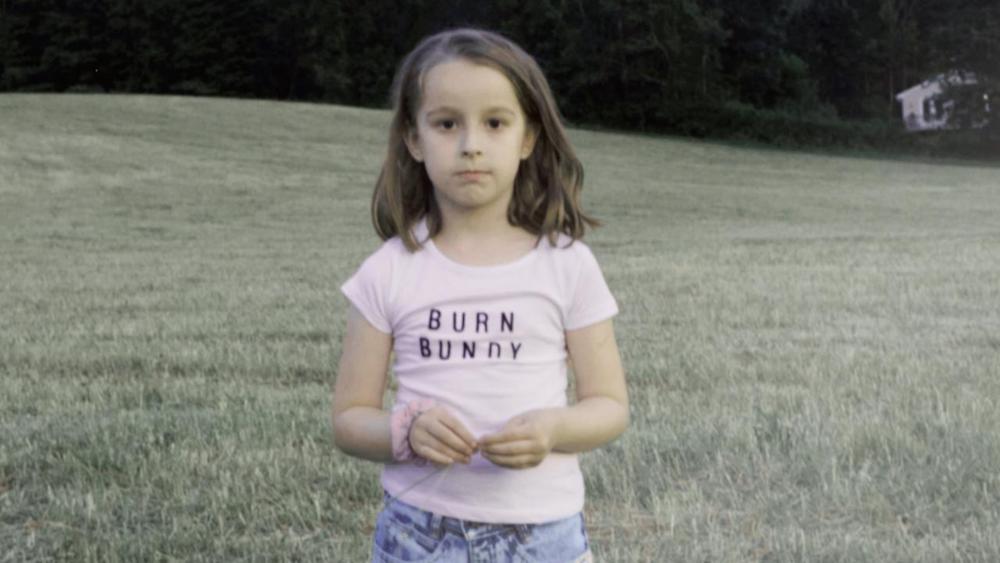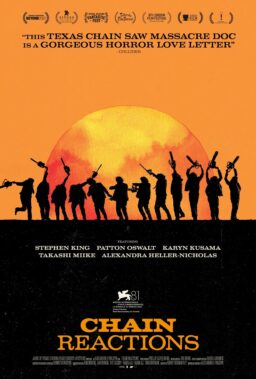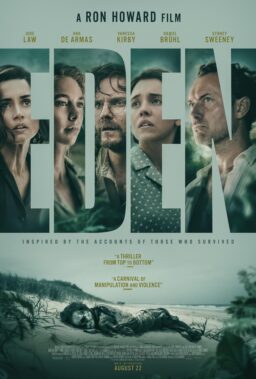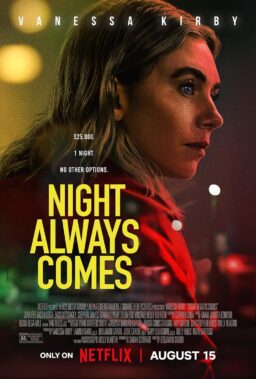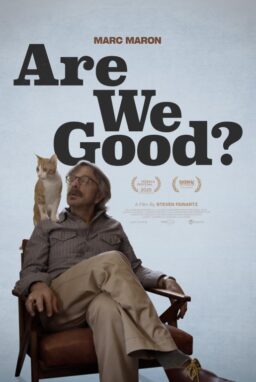Laura Moss’ “Fry Day” is a coming-of-age tale with a dark twist. Set against the backdrop of the execution of Ted Bundy in 1989, the story centers around a 16-year-old girl named Lauryn (Jordyn DiNatale) who makes a little extra money by taking and selling Polaroids of the people who are camped out near the prison, celebrating the execution. Little girls with “Burn Bundy” shirts walk around as though they’re at the town carnival. Lauryn seems fascinated by the stupidity of it all and knows full well she’s exploiting it as a money-making opportunity. Her evening starts out innocently enough until a boy from school, Keith (Jimi Stanton), offers to take her on a ride away from this scene to somewhere far more interesting. She reluctantly accepts the offer and finds herself in a truck with Keith and a few strangers, unsure whether or not she made the right decision.
That’s as far as I should go with the storyline.
Every time I watch “Fry Day,” I see something or pick up on a subtlety that I never noticed before, or it affects me in a different way. The film is rich with compelling images just within the first few minutes as the townsfolk gather for a night of celebratory catharsis as Bundy is about to be executed. The images of little girls wearing “Burn Bundy” t-shirts, of Lauryn innocently wearing a Ted Bundy mask around the back of her neck and the sound of newscasters describing in detail what Bundy did to his victims while the townsfolk cook their barbeque are images and moments that set the tone of the piece beautifully. Upon repeat viewings, the opening image of Lauryn slowly coming into frame to take our picture as we listen to the newscast about the Bundy execution makes the viewer as much a part of the celebration as the people on screen, without us realizing it. With many decades removed from the moment, we can look upon the spectators (or “idiots,” as Lauryn calls them) as bloodthirsty monsters of a different sort, but monsters are everywhere, in different forms and manifestations, and we all have one inside of us whether we know it or not.

All of this is expressed with understated ease by Moss, co-screenwriter Brendan Jamieson O’Brien and cinematographer Greta Zozula, who are careful not to underline any moment with anything superfluous. We stay with Lauryn as she slowly has her trust betrayed over the course of an evening, still with the Bundy mask tied, perhaps absentmindedly, around her neck. We know, as an audience, that she should not get in that truck, but DiNatale gives such a strong performance that both expresses the above-it-all teenage posturing with innocent naivete that we completely understand why she makes the choices she makes. She gets lured in by a charismatic monster in a way that echoes how Bundy may have lured his victims, slowly peeling away the mask with every action, including making Lauryn an unwitting accomplice in a cruel prank.
Moss and her crew do a remarkable job of making “Fry Day” feel like a horror movie in which the monsters manifest themselves out of human behavior. The viewer watches the film on the edge of their seat hoping everything will be okay in the end, while being left with haunting images to unpack and examine when the film is over. It is one of the tightest, strongest short films I’ve ever seen and one that should put Moss on every list of Filmmakers To Watch. Her follow-up film, currently making the rounds at festivals, “Allen Anders: Live at the Comedy Castle–Circa 1985” is certainly a radical departure from this film, but also demonstrates that she has no fear of taking risks. (Full disclosure: I programmed both films at the Chicago Critics Film Festival. Moss won the Audience Award for “Fry Day” in 2017.)

How did this story come about?
My writing partner Brendan and I were doing research for a feature film, also set in the 1980s at a time of serial celebrity. We came across this bizarre event, the Bundy ‘barbecue’, which was a real-life tailgate party that erupted across the street from Ted Bundy’s execution site in January of 1989. The event was so gruesome and gleeful and aggressive, it seemed like fertile ground to explore some of the larger themes I was interested in about toxic masculinity in society.
I know you’re a production designer by trade, so what was the approach in re-creating the late ’80s for this film?
I had a killer team; Liene Dobraja as my costume designer and Grace Sloan production designing, and we all meticulously combed through our references. Fortunately there’s lots of footage of the event, so we had great, specific material to draw from. Brendan and I also went down to Starke, Florida, where the event took place, took tons of photographs, combed through archives, photocopied yearbooks. I feel much more secure as a director if I’m saturating myself in that stuff during pre-production.
Jordyn DiNatale is a real find. How did you end up casting her?
Valerie Steinberg, our producer, saw Jordyn years before in a play called Recall, and was knocked out by her performance. Valerie has a great feel for performances and she pulled several great stage actors out of her mental theater rolodex to bring in. Jordyn is so present and honest and subtle, and she really makes the film. I want to work with her forever.
What has the reaction been like, particularly from women? And do you or anyone else view this film in a different light since the #MeToo movement?
There’s a moment in the film where Jordyn’s character, Lauryn, realizes that she’s in over her head with a boy she doesn’t know as well as she thought, and unfortunately that is a moment that resonates with a lot women. It’s an upsetting side to the female coming-of-age story that I hadn’t seen treated quite the way I experienced it, and it’s at the heart of the film. We wrote the movie before #MeToo, but yes, the themes feel even more resonant in light of all this systemic abuse coming into the open. And the core idea of Fry Day, that pointing to the actions of a bigger monster sometimes minimizes smaller, less explicitly violent aggressions against women definitely comes through more clearly in the wake of Weinstein.

I can’t imagine this film ending any other way, but you did film more. Can you talk a little about what we didn’t see?
The film is somewhat open-ended. We did shoot a scene that provides a definitive answer as to what happens to Lauryn, but in the edit realized the film didn’t have the same emotional impact as if we left her in a moment of decision, and left the audience in that tense space with her too. I think ending it this way puts the audience more in Lauryn’s head; we are left with the weight of her experience, trying to figure out what we would do next.
I normally end these Q&As with “What’s next for you?” But the last time I asked you (a year ago), you told me about a feature you’re working on that also has a serial killer theme. So, what is it about this subject that fascinates you?
It’s not so much the serial killers that interest me as our societal attitudes toward them. How we spend a lot of time obsessing over the motivations and inner lives of people who are so violent, who gain more power as we give them our attention. This includes me: I am completely guilty of this kind of fascination, a fascination with violence and horror in general. I’ve always thought of horror films as a chance for me to be able to step up to the line of what scares me most, in a relatively safe environment. It’s me trying to make friends with my own fear of death.

